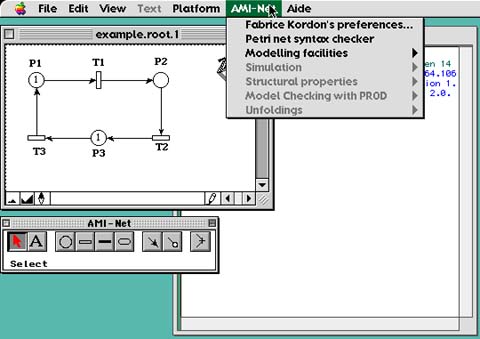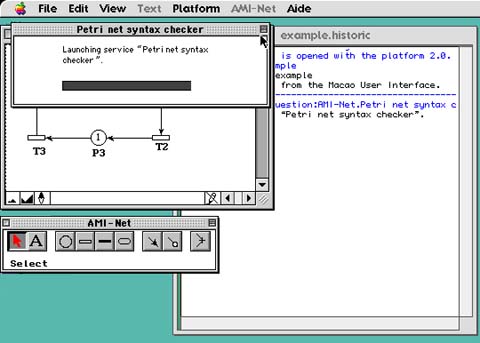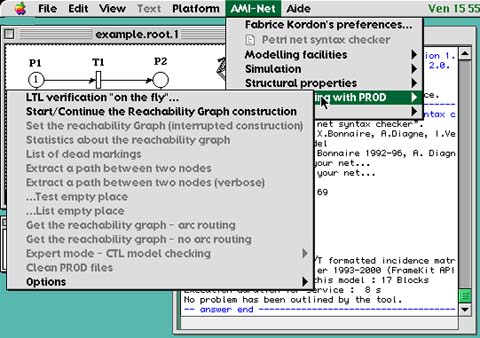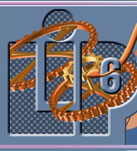|
In the current example, FrameKit has
downloaded the AMI-Net menu (services that can be applied
on an AMI-Net model). When a user is an administrator, he reaches the administration
menu (services to administrate the CASE environement).
Gray menu items correspond to not yet reachable services. Obviously,
the model has to be verified before any other action. FrameKit
enables the definition of an invocation order by means of conditions evaluated
after each service launch.

So, let us select the "Petri net Syntax Checker" service.
FrameKit display an historic window to let the user be aware of
the service execution and forward messages from the executing program.
When it is possible (i.e. the invoked program handles it), a "STOP"
button may let the user interrupt a too long service (this is not the
case here).

When a service is running for a given model, other services are unreachable
for this model. However, Macao allows to open several models and FrameKit handles up to five sessions in parallel (there is one
session per opened model).
When the service is executed, we get his status on the historic window
(hidden there). results may also be displayed on this window.
After each service execution, FrameKit computes the current set of available
services. Then, it enables and disables services according to the "automata"
designed by the CASE environment conceptors. In the example, below, we
notice that "Petri net Syntax Checker" is no available any more
(it will be if the model is changed) and that many other services are
now.

|









